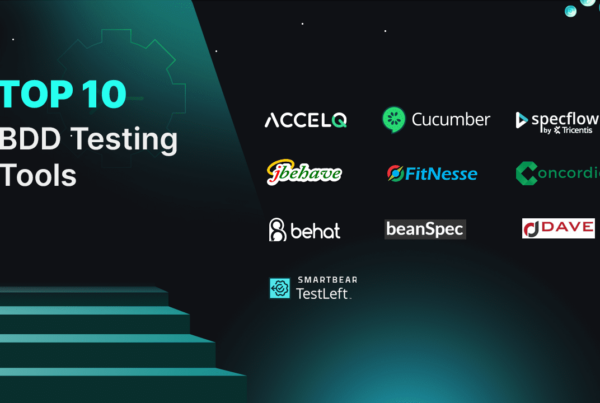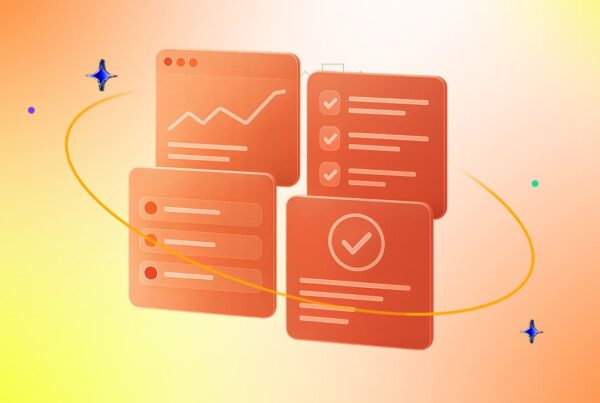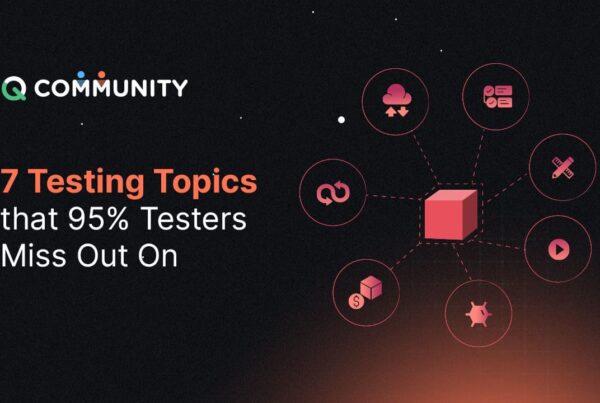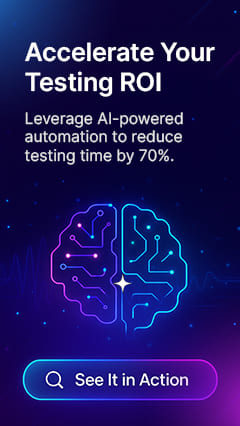Top 10 Bug Tracking Tools In 2025
The global bug tracking software market is predicted to reach $601.64 million by 2026. A bug is a consequence or error that occurs due to a fault in a program coding. Bug tracking software, or defect tracking software, is a tool that captures, reports and manages data on bugs that occur in software. This software market enables issue tracking, task management, and workflow management.
Benefits of Bug Tracking Tools for Automation Testing
- An integrated bug tracker system is important to trace specific failed test cases and take the necessary actions to make fixes accordingly.
- Identifying recurring issues lets you fix bugs completely, enabling your team to focus on high-priority bugs and boost productivity with the best bug tracker system.
- The defect tracking tool enhances communication between team members who work towards fixing bugs and discovering applications.
- A bug tracking system helps testers keep track of past issues and create a bug-free environment with high-quality products.
10 Best Software Bug Tracking Tools
Bug tracking tools, also known as defect tracking tools, record, manage, and track bugs, defects, or issues in software development projects. These tools help your teams identify, prioritize, and resolve problems during the software development lifecycle. Here are some of the best bug tracking tools that every software professional should know about.
1. ACCELQ Manual
A bug management tool is essential for maintaining quality and efficiency in Agile software development. ACCELQ Manual is a next-generation bug-tracking platform that supports test tracking, traceability, integrations, and test automation on a unified platform. A leading platform, the ACCELQ Manual can concurrently manage test creation and execution.
Features:
- Seamlessly create and link defects for failed test runs with existing test results.
- The ACCELQ-Connect plugin ensures test execution status is visible within Jira/Azure issues.
- Dynamic test suites for sprints/releases enhance test planning.
- The application universe shows a visual mapping and relation of the test assets in the project.
- Integrates with Jira On-Prem, Jira Cloud, and Azure DevOps, enabling CI pipeline execution via plugins.
- Detailed test results with inline screenshots and step-level execution tracking are supported.
- Tracks test runs across environments, organizes them at test/suite levels, and records execution logs in a video format.
- Review test reports to find associated bugs in the test cases.
Pros & Cons of ACCELQ Manual
- AI-powered root cause analysis identifies defect patterns, reducing debugging time
- Dynamic test coverage provides real-time visibility into execution gaps
- Automated test execution within CI/CD pipelines supports parallel runs for faster feedback
- No cons
2. Jira

Jira is a project management tool to plan and track tasks across every team. The Jira bug tracking template helps with project management and bug reporting.
Features:
- Boards visually categorize, prioritize, and track bugs and issues.
- Timelines ensure bug reporting and tracking stay aligned with project schedules.
- A bug tracking template captures and documents identified issues in one place.
- Connect Jira with Jenkins to remotely trigger builds in TeamCity for efficient issue resolution.
- Real-time dashboards and reports support data-driven decision-making.
Pros & Cons of Jira
- Get notifications with direct links to issues for quick access
- Supports continuous integration with Jenkins, TeamCity, and more
- Offers flexible configurations to tailor bug tracking for different project needs
- Allows duplicate names for bugs or issues, causing confusion
- The interface may be confusing for new users
- Requires third-party add-ons for advanced analytics
3. Bugzilla

Bugzilla is a robust defect tracking tool. Developers can use defect-tracking capabilities to manage bugs and product change requests.
Features:
- Email notifications to get on which bugs are fully controlled based on user preferences.
- Bug lists are available in Atom to subscribe to a search like a feed.
- iCalendar format for tracking bugs in a calendar, and CSV format for importing into spreadsheets.
- Automatic duplicate bug detection helps to identify similar bugs instead of adding new ones.
- Time Tracking estimates hours to fix a bug and tracks the time spent working on it.
Pros & Cons of Bugzilla
- Customized defect flow to fit different team needs
- Integrates with existing workflows
- Users can tailor the interface for better usability
- Slows down under heavy usage
- Outdated user interface
- Reporting functionalities could be more advanced
4. Mantis

MantisBT is an open-source web-based issue tracking software built on PHP. It supports Linux, Windows, and macOS on the server and is compatible with Safari and Opera.
Features:
- This tool includes customizable issues pages and workflow.
- It includes issue change history and RSS Feeds for saved filters and specific projects.
- Source control (GIT, SVN, and HG) integration is included to extend functionalities through plugins.
- Built-in reports and graphs.
Pros & Cons of Mantis
- Open source
- Chat integration
- Testers can apply group actions to many issues
- Limited reporting
- Email integration issues
- Difficult setup
5. Redmine

Redmine is an open-source project management web application. It is written using the Ruby on Rails framework.
Features:
- The calendar provides a monthly project overview, displaying issue and version due dates.
- Custom fields allow you to add extra information to several types of data. It is for issues, time entries, projects, and users.
- Source control management integration is supported.
- Allows users to report issues directly via email.
- Compatible with many databases.
Pros & Cons of Redmine
- Project management
- Custom fields
- Task tracking
- Limited features
- Poor user experience
- High learning curve
6. Zoho Bug Tracker

Zoho Bug Tracker is one of the software bug tracking tools that can submit, track, and fix bugs faster with the help of business rules and SLAs. Business rules are automation tools that help to update bug fields and call webhooks. Webhooks facilitate automated HTTP notifications to third-party applications.
Features:
- This free tool can record bugs quickly with due dates and add followers from one screen.
- Admins can use tool settings to set rules for updates, email alerts, and third-party app calls.
- This tool customizes the user interface with bug statuses, fields, workflows, and bug links to align with the project.
- GitHub integration allows commenting on changes and issue tracking. Bitbucket hosts Git repositories and tracks commits for code changes.
Pros & Cons of Zoho Bug Tracker
- Status tracking
- Manage and resolve IT-related issues beyond bug tracking
- Keeps a detailed record of system actions and changes
- Limited configuration
- Doesn’t support task progress tracking
- Advanced insights may require external tools
7. ClickUp

ClickUp is a project management platform. This platform integrates bug tracking to manage projects and track issues.
Features:
- This platform uses templates to streamline the setup and tracking of bugs.
- Time tracking is supported to check the time spent on resolving bugs.
- Automates workflows for bug assignments, status updates and sends notifications.
- Allows users to create and update bug reports directly from emails.
Pros & Cons of ClickUp
- Customizable dashboards to manage tasks and projects more efficiently
- Track billable hours, monitor team productivity, and analyze project performance
- Customize reports to show key metrics and export them in various formats
- The platform is cluttered and hard to navigate with many users
- Limited integrations
- High learning curve for new users
8. GitHub

GitHub is a cloud-based platform for storing, sharing, and collaborating with others to write code. GitHub Issues can track ideas, tasks, bugs, and feedback for work on GitHub.
Features:
- Issues can visualize large projects as tables, boards, or roadmaps and automate workflows with code.
- Task lists can tackle complex issues and track the status with progress indicators.
- With GitHub Flavored Markdown, references from commits, pull requests, releases, and deploys can be seen.
- The burn-up chart can identify bottlenecks and issues blocking the project’s progress.
- Issues can be created, viewed, and managed in your browser, phone, or tablet.
Pros & Cons of GitHub
- Good source code repository hosting with version control
- Supports task progress tracking
- GitHub integration with commits and pull requests
- Lacks rich CI/CD, requires external tools for advanced automation
- Limited audit trail for security tracking
- Basic issue tracking compared to other tools
9. Trello

Trello is a visual tool for managing projects, workflows, and tracking tasks. Its board, list, and card components can help organize projects visually.
Features:
- Dashboard view can manage workloads and prevent bottlenecks before they begin.
- Table view displays tasks in a spreadsheet-style list to sort and filter the necessary cards.
- The map view displays location-based data in context on an interactive map.
- BetterBugs reports detailed bugs directly to Kanban boards to make bug reporting and debugging easier.
Pros & Cons of Trello
- Manages tasks with Kanban boards
- Track issues
- Customizable workflows with integrations and automation
- Not ideal for complex projects
- Lacks advanced features compared to other project management tools
- Limited built-in reporting without third-party integrations
10. HP ALM/QC

HP ALM is designed to manage the various phases of the software development life cycle. HP QC is a test management tool, while HP ALM is a project management tool. Since version 11.0, HP QC has been named HP ALM.
Features:
- This tool can link test cases to releases for full traceability.
- It ensures test cases cover all requirements, serves as a central repository with version history, and tracks test case runs to verify testing credibility.
- This tool shares defects across projects and ensures stakeholders’ visibility.
- Integration with third-party tools is supported.
- Reports with pre-defined templates are included to monitor project health.
Pros & Cons of HP ALM/QC
- Defect tracking and traceability across many projects
- Reporting with cross-project insights
- Release management with KPIs to measure progress
- Cloning defects can cause data loss if not saved properly
- Complex user interface with a steep learning curve
- Limited customer support compared to modern tools
How to Select the Best Bug Tracking Tool?
Choosing the best bug tracking tool depends on the following:
- Confirm the tool scales with your team.
- Select a tool that can handle the complexity of your projects.
- Look for tools with intuitive and easy-to-use interfaces.
- Seamless bug tracking with CI/CD tools enables faster issue resolution.
- The application of AI technology is rapidly evolving. This technology offers predictive analytics to prevent bugs and reduce manual effort.
- The shift towards cloud-based solutions continues, with a focus on accessibility. It addresses the need for users to access tools from anywhere, facilitates remote work, and distributed teams.
- Check if your end-users will be reporting bugs or whether it’ll just be your internal team.
- Consider the cost and the value the tool brings.
- Ensure the tool works well with your existing tools and processes.
Conclusion
Bug tracking tools have evolved due to the complexity of software development and the need for more efficient solutions.
ACCELQ Manual elevates your testing experience by offering a unified manual and automated testing that integrates seamlessly into your existing tools. It simplifies test execution, defect creation, and dynamic reporting, allowing teams to track and manage the quality lifecycle efficiently. With its intuitive design and powerful features, the ACCELQ Manual empowers Agile teams to maintain high quality standards across all aspects of their development process.
Exploring the top tools for bug tracking? See why ACCELQ stands out—simplifying testing, accelerating bug resolution, and maximizing team productivity. Book your free demo today!
You Might Also Like:
 Top 10 BDD Testing Tools
Top 10 BDD Testing Tools
Top 10 BDD Testing Tools
 The Role of System UI in Automated Testing & Quality Assurance
The Role of System UI in Automated Testing & Quality Assurance
The Role of System UI in Automated Testing & Quality Assurance
 7 Testing Topics that 95% Testers Miss Out On
7 Testing Topics that 95% Testers Miss Out On
































